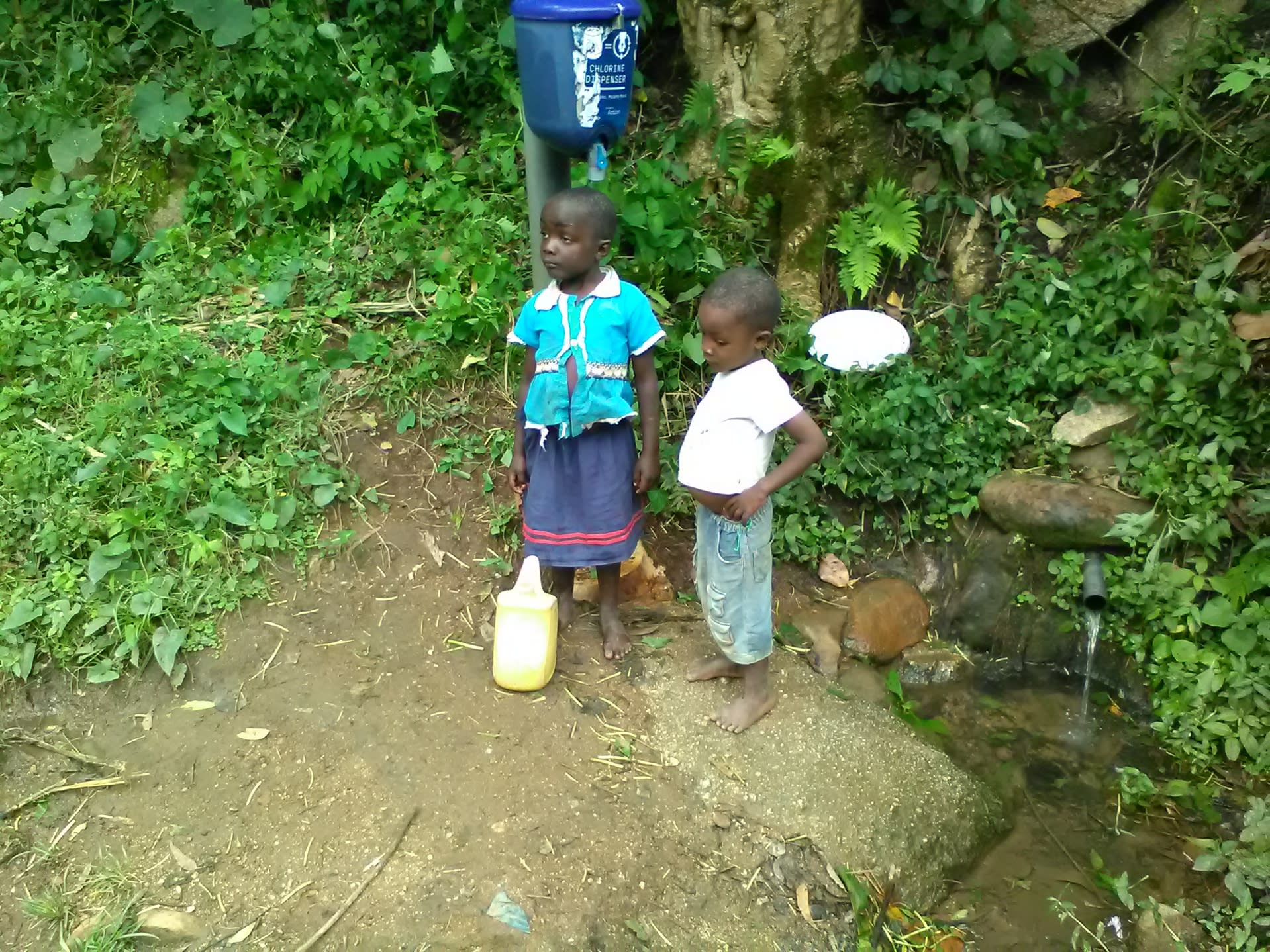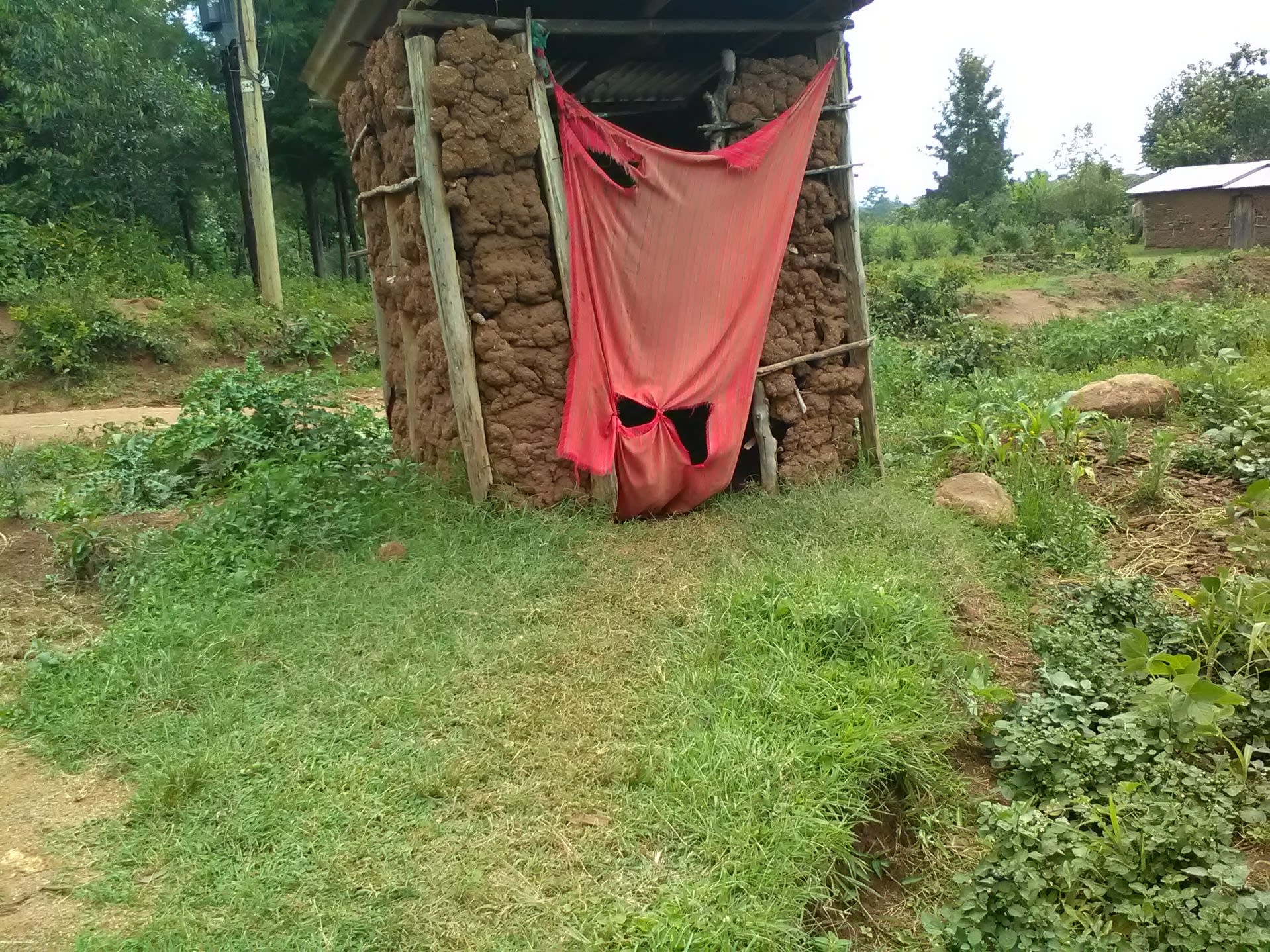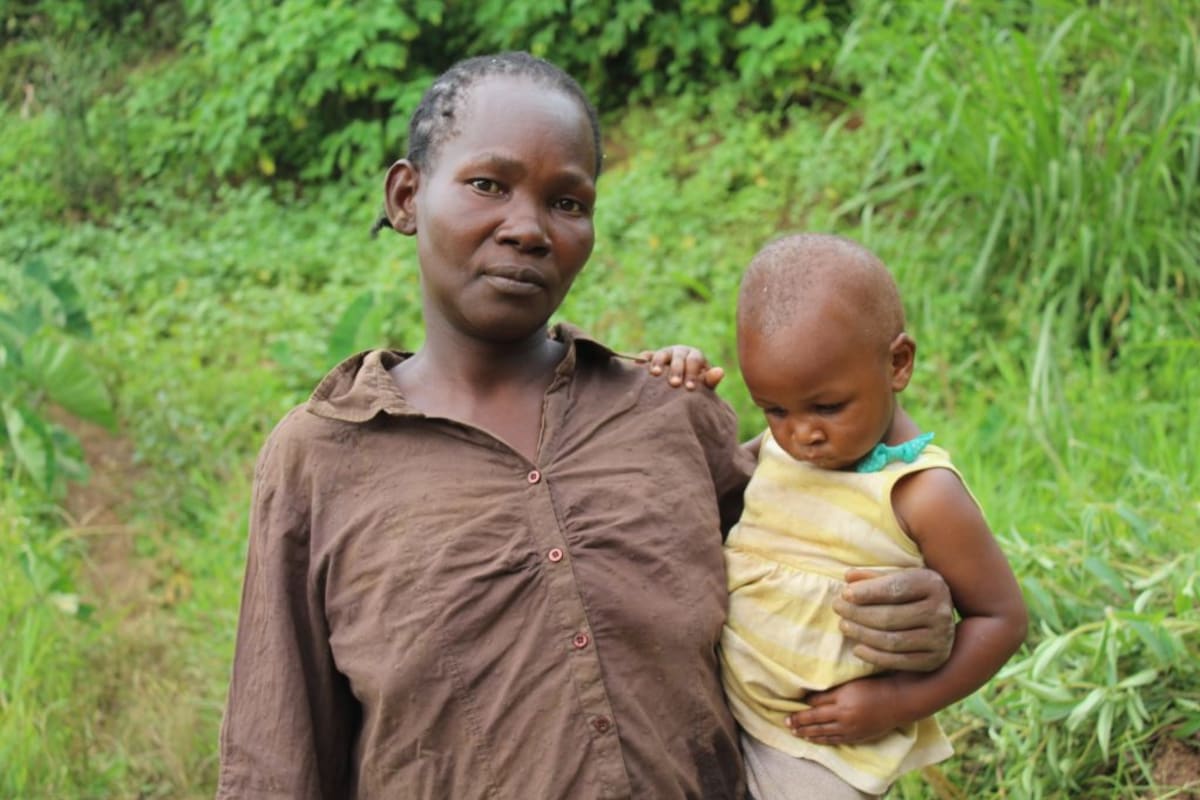Mashirobe Spring is an unprotected water point that is found in Shitoto Village in Kakamega County of Western Kenya.
A normal day begins early in the morning since a majority of the members of the village are motorcycle taxi (boda boda) riders and casual laborers in the nearby larger town of Kakamega.
"I normally wake up as early as 5am to start my boda boda business. I run the business the whole day until about 7pm in the evening then retire to my home," Mr. Boaz Anjia said.
Water
The spring is a permanent water source that serves more than 60 households.
Mr. Anjia attended one of our trainings in another village, introduced himself, and then directed us to Mashirobe Spring in his own village of Shitoto.
"This water source has been here since I was born. This spring has been serving members of the village for more than 65 years," Mr. Lawrence Mashirobe said.
Members of the spring have improvised a pipe which directs water into their uncovered jerrycans. Water fetched at the spring is stored in drums and the remaining water is stored in the jerrycans.

"We have made efforts to reach our area member of the County assembly to assist us in protecting this spring. The response has not been positive," Mr. Caroli Indika said.
The lack of access to safe drinking water leads to the spread of waterborne related diseases such as cholera and typhoid.
"We have been experiencing waterborne related diseases. We are grateful to the Lord for [The Water Project] developing an interest to protect this spring," Mr. Mashirobe said.
"We are looking forward to seeing this spring protected."
Sanitation
Most of the households have at least one form of sanitation facility an indicator that the village has a positive attitude towards hygiene and sanitation. The most common examples found are clotheslines, pit latrines, dish racks, and bathrooms.
As we visited the various homes, we were able to see a common trend in the structures of the latrines. Quite a number had thatched structures with the floors made of timber.

Some community members share latrines because they are unable to put up their own due to the fact that they are expensive to construct. Garbage is of disposed of in their farms which is allowed to decompose and later on used as manure.
Here’s what we’re going to do about it:
Training
Community members will attend hygiene and sanitation training for at least two days. This training will ensure participants have the knowledge they need about healthy practices and their importance. The facilitator plans to use PHAST (Participatory Hygiene and Sanitation Transformation), CLTS (Community-Led Total Sanitation), ABCD (Asset-Based Community Development), group discussions, handouts, and demonstrations at the spring. One of the most important topics we plan to cover is the handling, storage, and treatment of water. Having a clean water source will be extremely helpful, but it is useless if water gets contaminated by the time it’s consumed. Handwashing will also be a big topic.
Training will also result in the formation of a committee that will oversee operations and maintenance at the spring. They will enforce proper behavior around the spring and delegate tasks that will help preserve the site, such as building a fence and digging proper drainage. The fence will keep out destructive animals, and the drainage will keep the area’s mosquito population at a minimum.
Sanitation Platforms
On the final day of training, participants will select five families that should benefit from new latrine floors.
Training will also inform the community and selected families on what they need to contribute to make this project a success. They must mobilize locally available materials, such as bricks, clean sand, hardcore, and ballast. The five families chosen for sanitation platforms must prepare by sinking a pit for the sanitation platforms to be placed over. All community members must work together to make sure that accommodations and food are always provided for the work teams.
Spring Protection
Protecting the spring will ensure that the water is safe, adequate and secure. Construction will keep surface runoff and other contaminants out of the water. With the community’s high involvement in the process, there should be a good sense of responsibility and ownership for the new clean water source.
Fetching water is predominantly a female role, done by both women and young girls. Protecting the spring and offering training and support will, therefore, help empower the female members of the community by giving them more time and efforts to engage and invest in income-generating activities.

 Protected Spring
Protected Spring
 Rehabilitation Project
Rehabilitation Project



































